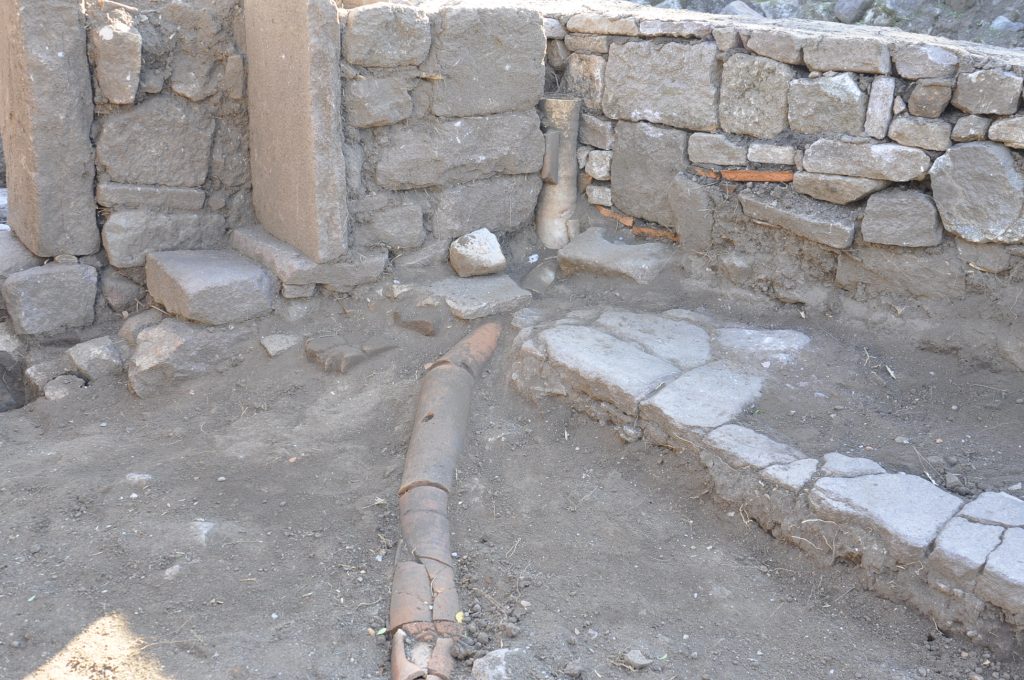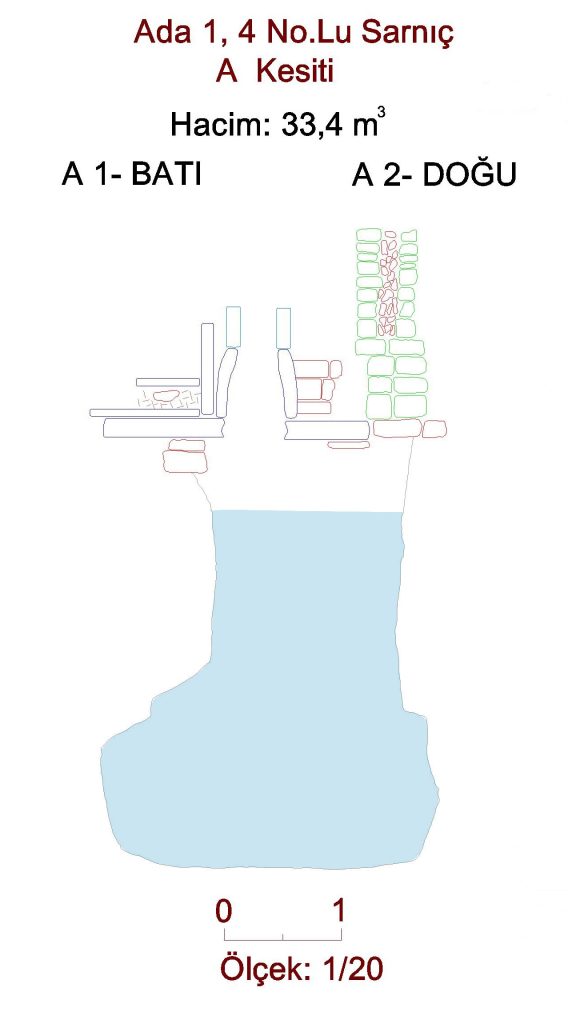
Aigai relied on rainwater throughout its life. The corrosive effect of rainwater on the foundations of buildings has been minimized ingeniously by drainage channels. The drainage system lied under the stone-paved road system directed water to cisterns which are hundreds in number, open basins for livestock and bathhouses’ depots. Waterrelated infrastructures were a vital necessity for Aigai. There are several options of supplying water to a densely populated ancient city, which are groundwater accessed through wells and springs, or transportation of water to the city via aqueducts and pipes from a source located higher than the city. However, these options are next to impossible in Aigai, which is located higher than its surroundings and does not have a water source located higher than itself.

Alternatively, ground water from sources such as streams is another option and this option should have been partially implemented in Aigai. Water may have been transported to the city from the streams (Kocaçay Stream) passing through the slopes of the hill on which the city is located. However, this option requires a constant and intensive workforce and does not work in some situations such as sieges. The last option is to collect rainwater. The Aigaians had collected each and every drop of rain that fell on the city to the cisterns via gutters, pipes and canals. They not only met their daily water needs, but also managed to operate at least two baths in the city via this arrangement. A sewage system has also been developed to separately transport wastewater.

